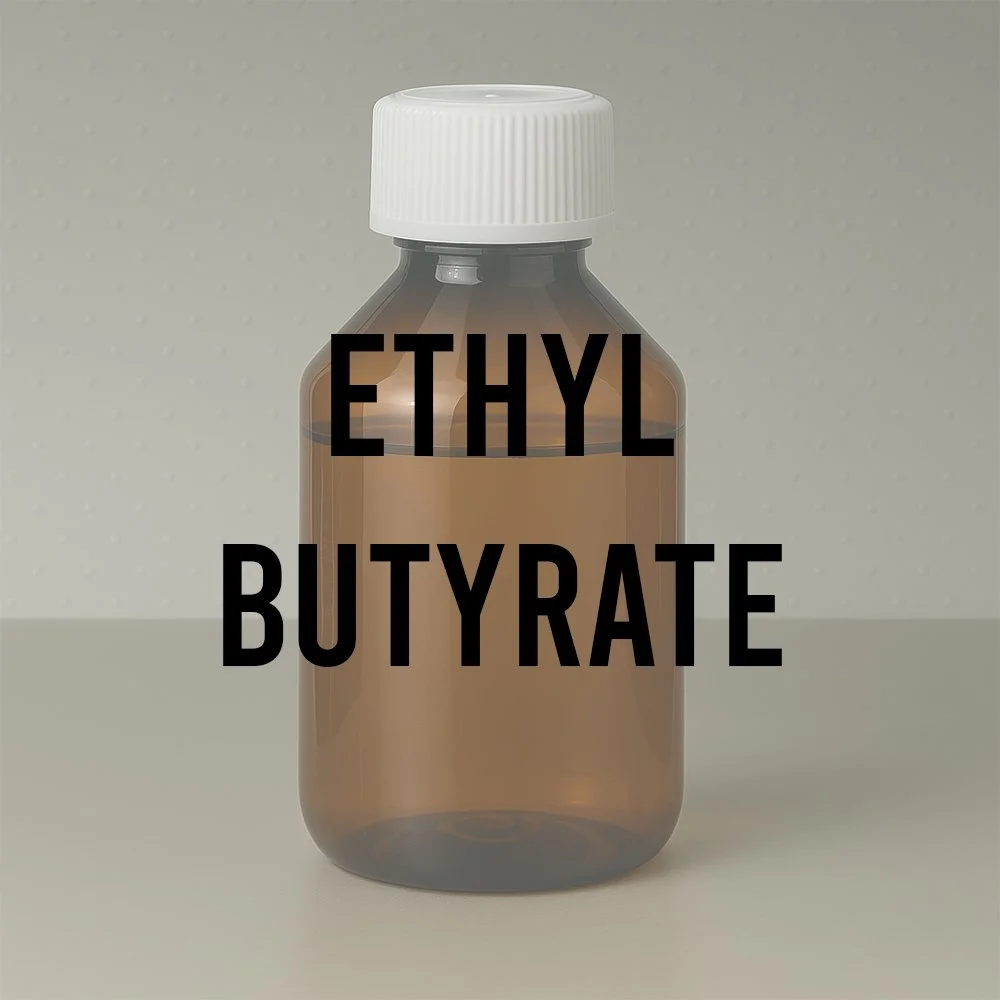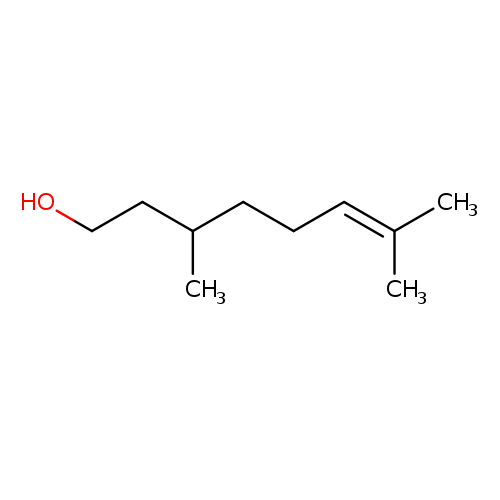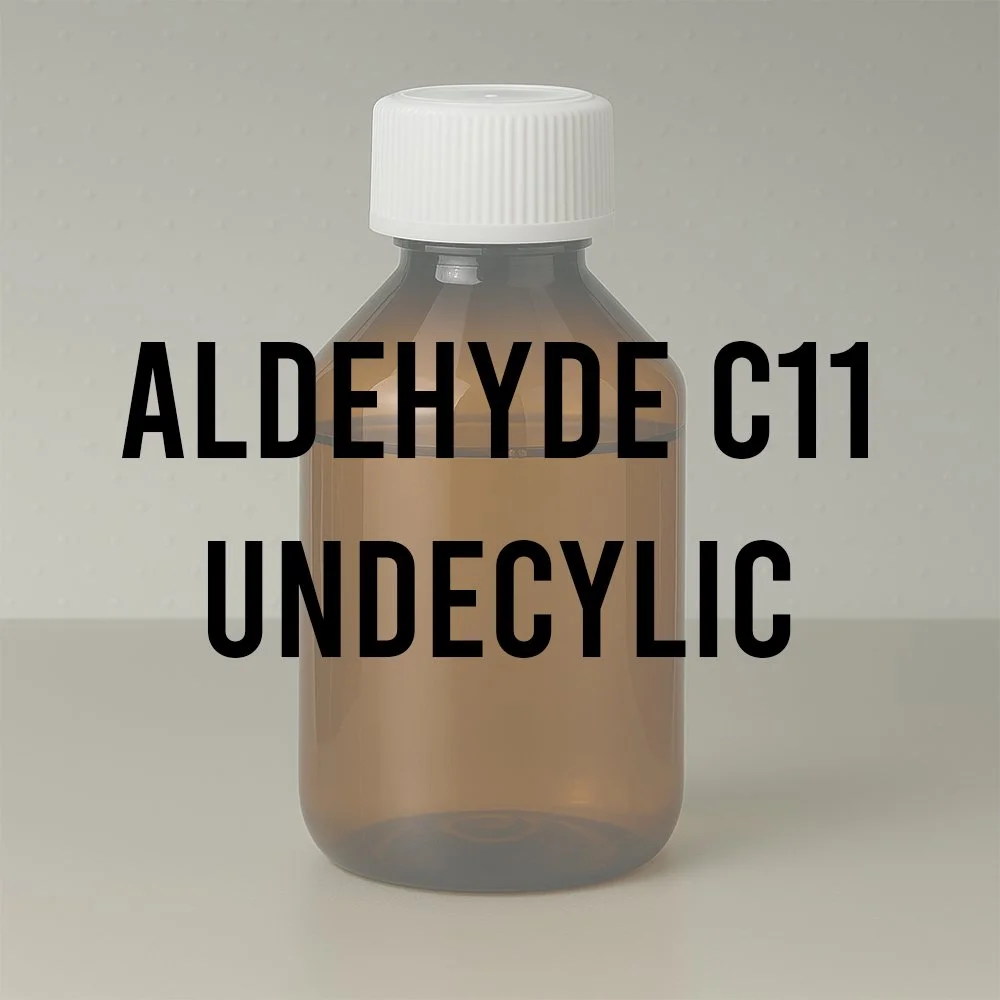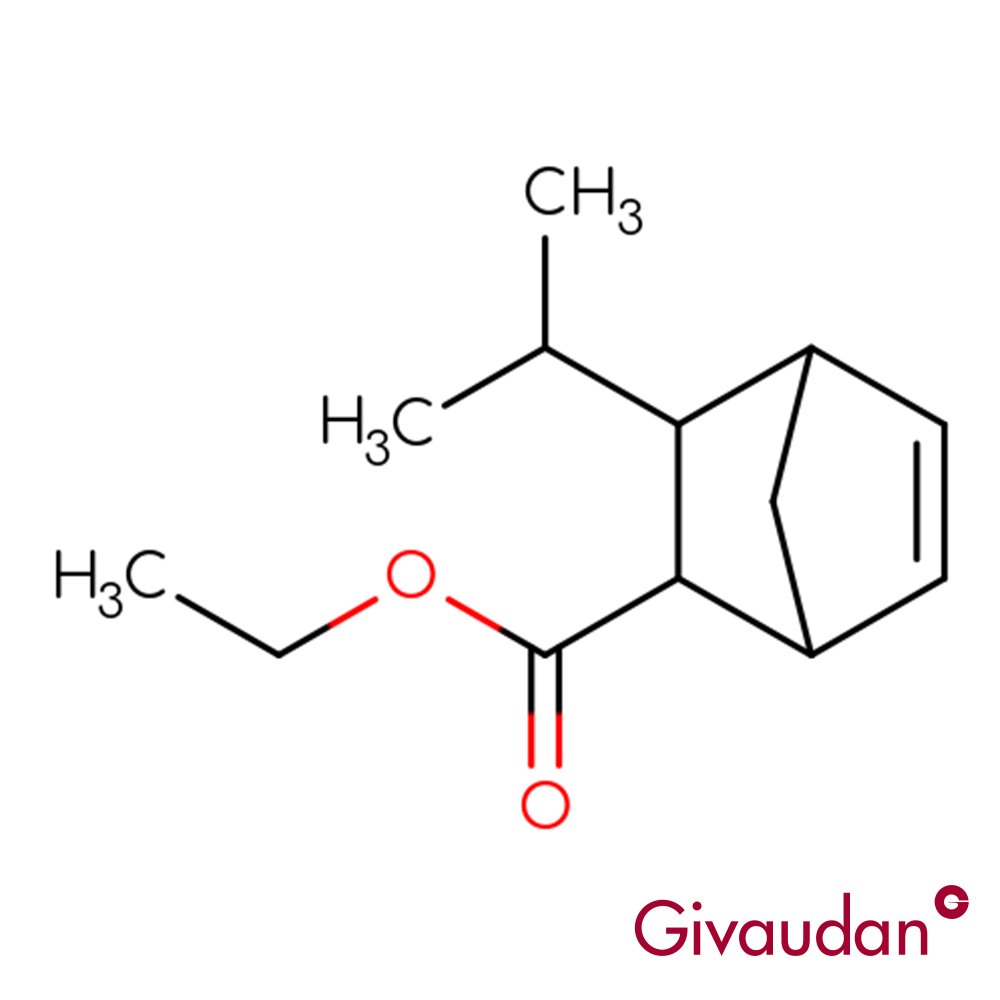Ethyl Butyrate (CAS 105-54-4) Technical Ingredient Overview
🔎 Chemical Name — Ethyl butanoate (IUPAC)
🧪 Synonyms — Butyric acid ethyl ester, Ethyl butyrate, Butyric ether, Butter ether, Ethyl n-butanoate, Butanoic acid ethyl ester
📂 CAS Number — 105-54-4
📘 FEMA Number — 2427
⚖️ Molecular Weight — 116.16 g/mol
📝 Odor Type — Fruity-ethereal ester
📈 Odor Strength — Very high; powerful and extremely diffusive
👃🏼 Odor Profile — Intensely sweet pineapple-banana with ethereal lift, juicy tutti-frutti character, subtle apple-pear nuances, and slight sour-buttery undertone providing naturalistic ripening effects
⚗️ Uses — Flavor enhancer in food and beverages (particularly orange juice, tropical fruit flavors), fragrance modifier in perfumery, solvent in perfumery products, plasticizer for cellulose, ingredient in alcoholic beverage formulations
🧴 Appearance — Colorless to pale yellow clear liquid with characteristic fruity odor
What is Ethyl Butyrate?
Ethyl butyrate (ethyl butanoate) is a short-chain aliphatic ester belonging to the butyrate family of flavor and fragrance compounds. This butyrate ester results from the formal condensation of the hydroxy group of ethanol with the carboxy group of butyric acid, functioning as a plant metabolite (Chemical Book, n.d.). As one of the most economically significant and widely utilized aroma chemicals in both flavor and fragrance industries, ethyl butyrate delivers an immediately recognizable pineapple-fruit character that has become synonymous with tropical fruit formulations.
The compound exhibits exceptional volatility and diffusion properties, making it an indispensable tool for perfumers seeking to create sparkling top notes and enhance the freshness of complex compositions. Its presence has been identified in numerous fruits including apple, banana, citrus peel oils and juices, cranberry, blueberry, black currants, guava, grapes, papaya, and strawberry (Chemical Book, n.d.), as well as in aged alcoholic beverages such as cognac, rum, whiskey, and wine.
Historical Background
While precise discovery dates for ethyl butyrate remain undocumented in accessible historical records (so far), the compound's synthesis and characterization emerged during the 19th century as part of systematic investigations into ester chemistry. The esterification reaction between butyric acid and ethanol—first explored by organic chemists studying carboxylic acid derivatives—became the standard synthetic route that remains in commercial use today.
Early research in pineapple aroma reconstitution pinpointed esters such as ethyl butyrate and amyl butyrate as major contributors to the fruit's characteristic profile, establishing these compounds as cornerstones of synthetic pineapple formulations in both flavor and fragrance industries (Scentspiracy, 2025). Historically, pineapple accords relied heavily on ethyl butyrate at concentrations sometimes exceeding 50% of the total blend, demonstrating the ingredient's central role in tropical fruit replication.
The industrial production and widespread adoption of ethyl butyrate accelerated throughout the 20th century as synthetic flavor chemistry matured. In industrial use, ethyl butyrate became one of the cheapest chemicals available, which significantly contributed to its popularity (Chemical Book, n.d.), enabling its incorporation into mass-market consumer products ranging from beverages to household fragrances.
The compound's identification as a naturally occurring constituent in numerous food sources eventually led to its recognition and approval by international food safety organizations, including FEMA (Flavor and Extract Manufacturers Association) which assigned it FEMA number 2427, and JECFA (Joint FAO/WHO Expert Committee on Food Additives) with JECFA number 29.
Olfactory Profile
Scent Family
Fruity esters (aliphatic ester subgroup) — Ethyl butyrate represents the quintessential butyrate ester profile and serves as the archetypal pineapple-fruit note in modern perfumery.
Main Descriptors
Ethyl butyrate delivers a powerful, ethereal, and diffusive fruity signature combining intense pineapple-banana character with juicy tutti-frutti sweetness, subtle apple-pear nuances, and a slight sour-buttery undertone that provides critical naturalistic "ripening" effects to fruit accords (Fraterworks, n.d.).
The primary olfactory characteristics include:
Pineapple dominance: Strong, authentic tropical pineapple note reminiscent of fresh fruit
Banana facet: Sweet, ripe banana undertones
Ethereal lift: Highly volatile, diffusive character that adds sparkle and freshness
Tutti-frutti sweetness: Juicy, candy-like fruit character
Buttery-sour nuance: Slight fatty, butter-like undertone that adds naturalistic depth
Cognac warmth: Subtle warm-fruity effect in low concentrations
Intensity
Very high impact — Ethyl butyrate is extremely diffusive and very powerful, becoming rather vomit-like when overdosed, but capable of adding freshness and lift to floral and oriental fragrances when used judiciously (Pell Wall, n.d.). The compound's exceptional strength requires careful dosing, typically ranging from 0.1% to 2.0% in finished fragrance compositions depending on desired intensity.
Tenacity
Moderate to low persistence — As a highly volatile top note ingredient, ethyl butyrate exhibits rapid evaporation with limited substantivity on skin or fabric. Fragrance strips typically retain the characteristic pineapple note for 30-60 minutes before complete dissipation. The compound requires fixative support from heavier musks, ambergris notes, or resinous materials to extend longevity in complex compositions.
Volatility
High volatility — With a boiling point of approximately 120-121°C and vapor pressure of 18.5 hPa at 25°C, ethyl butyrate classifies as an extreme top note material. This exceptional volatility contributes to its immediate olfactory impact and diffusive character, making it ideal for applications requiring instant fragrance delivery and sparkling freshness.
Fixative Role
Minimal fixative properties — Ethyl butyrate functions primarily as a radiant top-note enhancer rather than a fixative. The compound adds diffusive lift and fresh fruity character but offers no substantive fixation to fragrance bases. Perfumers must incorporate complementary fixatives when using ethyl butyrate to ensure acceptable fragrance persistence.
Applications in Fine Fragrance
Ethyl butyrate serves as an essential top note modifier for fruit accords, providing diffusive lift enhancement and naturalizing ripeness effects across diverse fragrance families (Fraterworks, n.d.). Its primary applications include:
Fruity Compositions
Tropical fruit accords: Central to pineapple reconstructions, often combined with allyl cyclohexyl propionate and other tropical esters
Mixed fruit blends: Enhances complexity in berry, stone fruit, and citrus combinations
Gourmand formulations: Adds authentic fruit character to dessert and confectionery-inspired fragrances
Floral Modifications This material has occasionally been used in minute traces in perfume compositions for its warm-fruity effect in rose and other floral bases (Arctander as cited in Pell Wall, n.d.). Small additions (0.05-0.1%) can:
Brighten jasmine with fresher, sharper character
Add juicy, natural facets to rose compositions
Enhance tropical floral accords (ylang-ylang, frangipani)
Oriental & Woody Fragrances When used sparingly (0.1-0.3%), ethyl butyrate contributes:
Fresh lift to heavy oriental bases
Contrast and complexity in amber-woody structures
Naturalistic fruit-resin balance in balsamic compositions
Masking & Functional Applications Ethyl butyrate is used as a masking agent for industrial fragrances (Arctander as cited in Pell Wall, n.d.), effectively covering unpleasant base notes in household and personal care products.
Performance in Formula
Blending Behavior Ethyl butyrate exhibits excellent miscibility with most fragrance materials, integrating smoothly into both alcoholic and oil-based formulations. However, its extreme volatility and high diffusion coefficient require careful attention to:
Top note balance: Can dominate lighter compositions if not properly moderated
Overdosing risks: Becomes unpleasantly sharp and vomit-like above 2-3% in most applications
Maceration effects: Scent character stabilizes after 24-48 hours of maceration
Synergistic Combinations Ethyl 2-methylbutanoate provides greener, more apple-like character while ethyl butyrate offers classic pineapple-banana fruitiness, showing excellent synergy when combined in 2:1 or 3:1 ratios for complex fruit accords (Scentspiracy, n.d.).
Additional complementary pairings include:
With ethyl hexanoate: Creates fuller, more complex pineapple-apple effects
With isoamyl acetate: Adds banana-pear depth to fruit blends
With allyl cyclohexyl propionate: Enhances tropical authenticity
With fructalate: Forms simple but effective pineapple accords
Chemical Stability Ethyl butyrate may form butyric acid through time (ScenTree, n.d.), particularly in the presence of moisture or under acidic/alkaline conditions. This hydrolysis concern necessitates:
Proper storage in tightly sealed containers
Protection from moisture and extreme pH environments
Regular quality assessment for products stored beyond 24 months
Industrial & Technical Uses
Beyond perfumery and flavor applications, ethyl butyrate serves multiple industrial functions:
Solvent Applications
Cellulose plasticizer in coating and film formulations
Solvent in perfumery concentrates and extracts
Component in specialized cleaning formulations
Pharmaceutical Uses
Flavoring agent in oral medications and syrups
Microemulsion component in transdermal drug delivery systems
Taste-masking agent for bitter active ingredients
Food & Beverage Industry Ethyl butyrate is commonly used as artificial flavoring resembling orange juice and is used in nearly all orange juices sold in the US, including those marketed as "fresh" or "concentrated" (Wikipedia, 2025). Additional applications include:
Flavor enhancer in tropical fruit beverages
Alcoholic beverage formulations (martinis, daiquiris, rum)
Confectionery and baked goods flavoring
Research Applications
Model compound in esterification reaction studies
Biosynthesis pathway investigations in yeast and fermentation
Olfactory receptor research and sensory science studies
Regulatory & Safety Overview
IFRA Status
According to IFRA Amendment 51, ethyl butyrate has no restriction for Category 4 products (Fraterworks, n.d.). This ingredient is not restricted under the 51st Amendment (ScenTree, n.d.).
IFRA 51 Documentation: https://ifrafragrance.org/initiatives-positions/safe-use-fragrance-science/ifra-standards
The absence of restrictions indicates that ethyl butyrate can be used without specific concentration limits across all IFRA product categories, subject to good manufacturing practices and general safety considerations.
EU Cosmetics Regulation
EC Number: 203-306-4
CosIng Status: Approved for use in cosmetic products
Allergen Labeling: Not listed among the 81 fragrance allergens requiring declaration under EU Regulation 2023/1545
Compliance: Compliant with EU Cosmetics Regulation (EC) No 1223/2009
FEMA Status
FEMA Number: 2427
GRAS Status: Generally Recognized as Safe (GRAS) for use in food
JECFA Number: 29
Flavis Number: 09.039
Council of Europe Number: 264
Ethyl butyrate is recognized by the Flavor and Extract Manufacturers Association with FEMA number 2427 and by the Joint FAO/WHO Expert Committee on Food Additives with JECFA number 29 (FEMA, n.d.).
Toxicology
Safety assessments by RIFM (Research Institute for Fragrance Materials) support the safe use of ethyl butyrate in fragrance applications when used according to IFRA guidelines and good manufacturing practices. The compound exhibits:
Low acute toxicity via dermal and oral routes
Minimal sensitization potential at typical use levels
No evidence of genotoxic or carcinogenic effects
Rapid metabolism and elimination in biological systems
Handling Precautions:
Flammable liquid (Flash point: 26°C)
May cause skin and eye irritation in concentrated form
Requires proper ventilation during handling
Store away from heat sources and ignition
References
Arctander, S. (as cited in Pell Wall, n.d.). Perfume and flavor materials of natural origin. Retrieved from https://pellwall.com/products/ethyl-butyrate
Bauer, K., Garbe, D., & Surburg, H. (2001). Common fragrance and flavor materials: Preparation, properties and uses(4th ed.). Wiley-VCH. [Project knowledge source]
Chemical Book. (n.d.). Ethyl butyrate 105-54-4. Retrieved from https://www.chemicalbook.com/ChemicalProductProperty_EN_CB1852659.htm
Flavor and Extract Manufacturers Association (FEMA). (n.d.). Ethyl butyrate - FEMA 2427. Retrieved from https://www.femaflavor.org/flavor-library/ethyl-butyrate
Fraterworks. (n.d.). Ethyl butyrate. Retrieved from https://fraterworks.com/products/ethyl-butyrate
Fraterworks. (2025, July 28). Understanding esters. Retrieved from https://fraterworks.com/blogs/information/understanding-esters
George, J., et al. (2023). A review of the aroma chemistry of pineapple. Food Chemistry.
International Fragrance Association (IFRA). (2023). Notification of the 51st Amendment to the IFRA Standards. Retrieved from https://ifrafragrance.org/docs/default-source/51st-amendment/ifra-standards---51st-amendment.pdf
Pell Wall. (n.d.). Ethyl butyrate. Retrieved from https://pellwall.com/products/ethyl-butyrate
PubChem. (n.d.). Ethyl butyrate (Compound CID 7762). National Center for Biotechnology Information. Retrieved from https://pubchem.ncbi.nlm.nih.gov/compound/Ethyl-butyrate
ScenTree. (n.d.). Ethyl butyrate (CAS N° 105-54-4). Retrieved from https://www.scentree.co/en/Ethyl_butyrate.html
Scentspiracy. (2025, April 11). The chemistry of pineapple. Retrieved from https://www.scentspiracy.com/blog/the-chemistry-of-pineapple
Scentspiracy. (n.d.). Ethyl 2-methyl butyrate (CAS 7452-79-1). Retrieved from https://www.scentspiracy.com/fragrance-ingredients/p/ethyl-2-methyl-butyrate
Sigma-Aldrich. (n.d.). Ethyl butyrate product information. Retrieved from https://www.sigmaaldrich.com/US/en/product/aldrich/w242705
Wikipedia. (2025, August 15). Ethyl butyrate. Retrieved from https://en.wikipedia.org/wiki/Ethyl_butyrate











